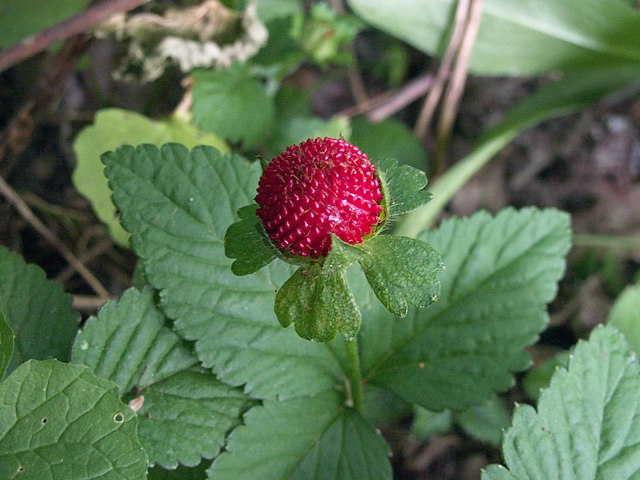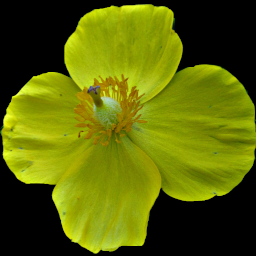
These fine large trees produce an abundance of little white flowers in narrow racemes, followed by tasty black fruit. The crinkly rough bark of mature trees is distinctive. This tree grew in Riverview Park, where it was blooming in the middle of May.
The similar Choke Cherry (Prunus virginiana) also carries its flowers in narrow racemes, but its fruit is red, its bark is smooth, and it rarely grows into more than a medium-sized tree.
The large genus Prunus also includes plums and many other useful fruits. Cherries with flowers and fruit in narrow racemes are placed in the subgenus Padus. Gray describes the genus, the subgenus, and the species:
PRUNUS [Tourn.] L. PLUM, CHERRY, etc. Calyx 5-cleft; the tube bell-shaped, urn-shaped, or tubular-obconical, deciduous after flowering. Petals 5, spreading. Stamens 16-20. Pistil solitary, with 2 pendulous ovules. Drupe fleshy, with a bony stone. —Small trees or shrubs, with mostly edible fruit. (The ancient Latin name.) Cerasus B. Juss. Amygdalus L.
PÀDUS [L.] Reichenb. Drupe small, globose, without bloom; the stone turgid-ovate, marginless; flowers in racemes terminating leafy branches, therefore appearing after the leaves, late in spring. Padus Moench.
P. serótina Ehrh. (WILD BLACK or RUM C.) A large tree, with reddish-brown branches, the inner bark aromatic; leaves oblong or lanceolate-oblong.
–
In Pennsylvania Trees, an extraordinarily useful book issued by the Commonwealth’s Department of Forestry in 1914, Joseph S. Illick gives us this copious description (fortunately the march toward extinction he warns us about has been reversed):
WlLD BLACK CHERRY.
Prunus serotina, Ehrhart.
FORM—Usually reaches a height 0f 50-75 ft. with a diameter of 2-3 ft., but may attain a height of 110 ft. with a diameter of 5 feet. in forest-grown specimens the trunk is usually long, clean, and with littie taper, while in open-grown specimens it is usually short. Crown rather irregularly-oblong.
BARK—On young trunks rather smooth, glossy, reddish-brown, marked with conspicuous white horizontally-elongated lent icela: peels off in thin fiim-like layers, and exposed greenish inner bark. On old trunks blackish, roughened by thick irregular plates with projecting edges.
TWIGS—Smooth, rather slender, reddish-brown, marked with numerous, pale, round lenticels which in time become horizontally-elongated; pith white or light brown. Often covered with a thin, film-like, grayish coating which rubs off readily. Inner bark has a characteristic bitter taste and a rather pleasant odor.
BUDS—Alternate, about 1/8 – 1/6 of an inch long, ovate, usually sharp-pointed, smooth, glossy, reddish-brown, covered by about 4 visible ovate bud-acales which are sometimes coated with a smoky or grayish film-like skin. Lateral buds usually divergent but sometimes appressed, flattened, and larger than the terminal.
LEAVES—Alternate, simple, oblong or lanceolate-oblong, 2-5 inches long, tapering or rounded at bane, taper-pointed at apex, serrate on margin with short incurved teeth, rather thick and shiny above, paler beneath.
LEAF-SCARS—Alternate, more than 2-rankcd, raised on projections of the twig, semielliptical tendency in outiine, with 3 bundle-scars.
FLOWERS—Appear in May or June; white, perfect, about 1/4 of an inch across, borne in elongated drooping racemes 3-4 inches long.
FRUIT—A purpllsh-biaсk juicy drupe, 1/3 to 1/2 of an inch in diameter, arranged in rather open dropping clusters; seed stony. Matures in summer.
WOOD—Diffuse-porous; rays very distinct; heartwood reddish-brown; sap wood narrow and yellowish; moderately heavy, hard and strong, fine-grained, does not warp or split in seasoning. Young wood is very durable. Its value is due to color and lustre and not to figure. Weighs 36.28 lbs. per cubic foot. Used principally in furniture and finish, also used for tools like spirit levels, implements, patterns, cores, and for high class panels.
DISTINGUISHING CHARACTERISTICS—The Wild Black Cherry, also known as Wild Cherry, Rum Cherry, Black Cherry, and Cabinet Cherry, may be distinguished from our other native species by its larger size and by the rough, dark, scaly bark which is found on the older trunks. For further distinguishing characteristics see Choke Cherry, page 171, and Fire Cherry, page 172. The introduced Domestic Cherry (Prunus avium) can be distinguished from this one by its stouter often grayish twigs, its smoother and shiny bark (Fig. 115) with conspicuous long and high lenticels and its clustered buds at the tips of stubby, lateral, spur-like branches. The fruit of the Domestic Cherry is larger than that of our native cherries and the leaves have rounded teeth often with glands and are frequentiy slightly pubescent on the lower side.
RANGE—Nova Scotia south to Florida, westward to South Dakota, Kansas, and Texas.
DISTRIBUTION IN PENNSYLVANIA—Found throughout the State. Rather common but nowhere very abundant. Usually occurs solitary in mixture with other species. Magnificent specimens were present in the original forest of Potter county. Thrifty pure stands of young trees occur at present on the Hull State Forest in southern Potter county. The specimen of this species contained in the Jessup Wood Collection exhibited in the American Museum of Natural History, New York City, was procured in Wyoming county, Pennsylvania.
HABITAT—Thrives best on rich alluvial soil and fertile slopes. It will grow on dry and often rather sterile slopes. On account of its long tap-root it requires loose deep soil. Forester George Perry reports that this species suffers least from late frosts of all the native trees of southern Potter county.
IMPORTANCE OF THE SPECIES—This is a very important timber tree. its wood is valuable especially for furniture and interior finish. Nowhere in its range has it ever been very abundant and on account of its prized wood it has been cut extensively. As a consequence it is now becoming rare, in fact marching towards extinction. It deserves to be planted extensively and to be protected carefully where it is found growing naturally.














